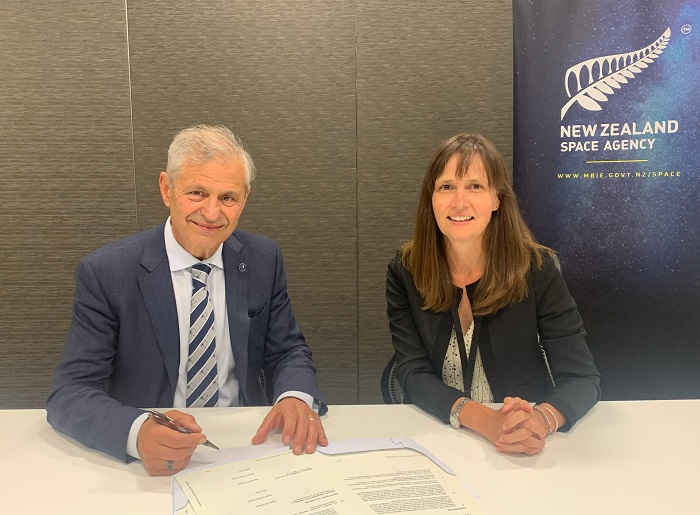The New Zealand Space Agency has signed a space science and technology partnership agreement with Australia’s leading space research organisation, the SmartSat Co-operative Research Centre.
The agreement to collaborate on space science and technology research projects will advance space science, leading to real world benefits for New Zealanders.
The partnership is an opportunity work together to solve joint trans-Tasman challenges. Research enabled by this agreement will support efforts to promote the safe and responsible use of space, make better use of aerospace enabled data in primary industries and advance world-leading technology to improve communications.
It builds on similar successful international space science partnerships with NASA and the German Aerospace Center (DLR).
Under this agreement, up to $6 million will be made available from the Government’s Catalyst Fund to support New Zealand researchers to participate in collaborative research projects through Australia’s SmartSat Cooperative Research Centre. The projects will focus on Earth observation, space situational awareness and optical communications.
Earth observation projects help to unlock information about the environment and climate through observation of the Earth from high-altitude and space. This data can help monitor biosecurity risks and manage crops.
Space situational awareness projects will help to develop new ways to monitor the orbital environment and be at the forefront of global sustainable space activities.
Optical communications projects investigate more efficient methods for sending large volumes of data between Earth and space and support future space exploration.
A call for proposals is planned in the coming months with the aim for successful projects to start in the second half of 2024.

The SmartSat Cooperative Research Centre brings together over 135 participating organisations, including national and international partners, with more than 400 researchers. With a portfolio of over 150 R&D projects across Advanced Communication, Connectivity and Internet of things (Iot) Technologies, Advanced Satellite Systems, Sensors and Intelligence, and Next Generation Earth Observation Data Services, SmartSat continues to contribute to building Australia’s space R&D capability.
Image credit: Jeremy Thomas

A bit like Black Birch
Which was used for working out the coordinates for Polaris submarine based missiles
So spying on people, nations and making it easier for the military? I don’t see anything good coming of this…
Nah, they’d never do that. They’re putting cameras up in space and pointing them at the earth for climate change, that’s all 😉